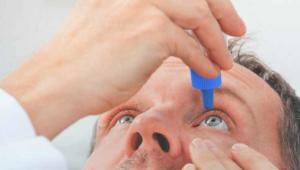Cataract surgery is one of the safest and most frequently performed procedures. It normally takes ten to twenty minutes and is performed using a topical anesthetic. It enables the replacement of the opaque lens with an intraocular lens (IOL), resulting in full visual recovery. The majority of patients resume normal activities the following day; nevertheless, some precautions must be followed to minimize potential cataract surgery complications.
What Should You Expect After Cataract Surgery?
To fully benefit from cataract surgery melbourne, it is sometimes necessary to wait for one to two weeks for your eyes and brain to adjust to your new lenses.

It is prudent to be informed that you may come across the following:
- Significant hypersensitivity to light and glare may last for 2-3 days as a result of pupil dilation
- Clouded vision during the first hours is normal as the swollen cornea requires 48-72 hours to heal
- Redness may appear in the white area of your eye
- A slight annoyance, burning sensation may be present during the early hours • A dry eye sensation may persist for three- or four-months post-surgery
Following cataract surgery, it is recommended that you wear a new pair of lenses or spectacles.
How Long Does It Take for Cataract Surgery to Heal?
Individuals heal or recover at varying speeds, with some experiencing quick healing and others experiencing more gradual recovery. While the usual recovery time for cataract surgery is around one month, you should be able to examine photographs with the sharpest of focus within a week or two after surgery, provided you adhere to all post-operative precautions.
Ten Recommendations for a Safe and Speedy Recovery Following Cataract Surgery
As long as your wounds are not entirely healed, it is important to take some basic precautions, especially during the first two weeks after cataract surgery, as the eye is quite vulnerable. The following are the most crucial actions to take:
- Maintain the greatest possible standard of hygiene
- After thoroughly washing your hands, administer eye drops as directed by your physician.
- Avoid eye trauma at all costs.
- Apply the protective cup before sleeping after thoroughly washing it with soap and water.
- Avoid sleeping on the side of the operated eye for an extended amount of time.
- Avoid strenuous physical activity or sudden movements.
- Gently rinse your hair to prevent rinsing soap or shampoo into your eyes.
- Avoid all sports till you are completely recovered.
- Driving is not recommended while your vision is impaired and your corrective glasses are being adjusted.
- Avoid swimming and vigorous physical activity for two to three weeks after cataract surgery.

Follow-Up Appointments Are Critical
Even though your vision seems to be normal, it is possible that you are still on the mend. The first follow-up appointment should be scheduled the day after cataract surgery, with subsequent visits essential to ensure a full recovery. Any odd symptoms that develop in the days after cataract surgery should be reported to your ophthalmologist in Australia.
Your Reconstruction
You had cataract surgery lately. It replaced your cloudy natural lens with a clear artificial lens.
Following cataract surgery, your eye will be entirely painless. It may, however, feel abrasive, sticky, or unpleasant. Additionally, it may produce more water than usual.
Within one to three days following cataract surgery, the majority of patients see an improvement in their vision. However, it may take between three and ten weeks to experience all of the benefits of cataract surgery and to see well.
Your physician may prescribe an eye bandage, patch, or transparent shield for you to wear at home. This will safeguard your eye from rubbing. Additionally, your doctor will prescribe eye drops to promote recovery. Utilize them exactly as directed.
You can read or watch television instantly, although details may look fuzzy. Within one to three days, the majority of individuals may return to work or their normal schedule. Even after healing, you may need glasses, especially for reading.
This care sheet offers an estimate of the time required for recovery. However, each person recovers at a unique pace. Take the steps listed below to dramatically enhance your health.
How will you care for yourself at home?
- If you are fatigued, take a rest. Sufficient sleep will assist in recuperation.
- You may have trouble judging distances for a few days. When climbing and descending stairs and pouring hot beverages, go gently and cautiously. If necessary, get help.
- Consult your physician to ascertain the appropriate time to drive.
- Keep your eye bandage, patch, or shield in place for the time prescribed by your doctor. You may discover that all you need to do is wear it while sleeping.
- You may shower or wash your hair the day after cataract surgery. Avoid contact with water, soap, shampoo, hair spray, and shaving lotion during the first week, particularly.
- For at least one week, refrain from touching or exerting pressure on your eye.
- For a one- to two-week period, abstain from using eye makeup. Additionally, you may prefer to abstain from facial creams and lotions.
- · Avoid coloring or perming your hair for 10 days after surgery.
- For at least two weeks or until your doctor gives the all-clear, avoid bending over or indulging in strenuous activities such as biking, jogging, weight lifting, or aerobic exercise.
- Avoid swimming, hot tubs, gardening, and dusting for one to two weeks.
- Wear sunglasses on sunny days for at least one year after cataract surgery.
Utilization of medications
- Your doctor will assess whether and when you may continue your drug regimen. Additionally, he or she will advise you on how to properly administer any new prescriptions.
- Consult your doctor if you are already taking aspirin or another blood thinner to decide when and if you should restart usage. Ascertain that you understand your doctor’s request completely.
- Follow your doctor’s instructions for the correct eyedrop application. Always thoroughly wash your hands before injecting your drops.
- To put eye drops: – Tilt your head back and drag your lower eyelid down with one finger.
– Place the drug in the bottom lid by squeezing or dropping it.
– For 30–60 seconds, close your eye to let the drops or ointment disperse evenly.
– Avoid contacting the ointment or dropper tip with your eyelashes or any other surface when applying it.
- Follow your doctor’s instructions on the use of pain medicines.



